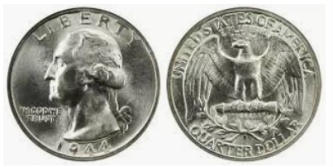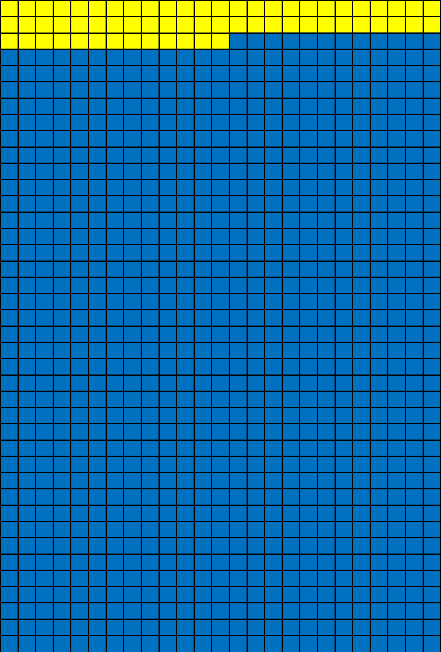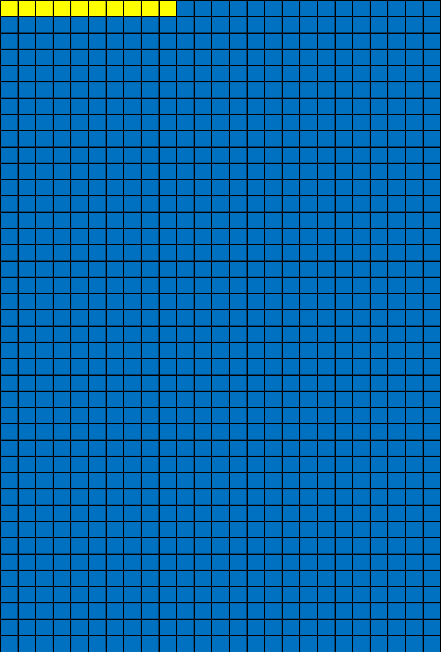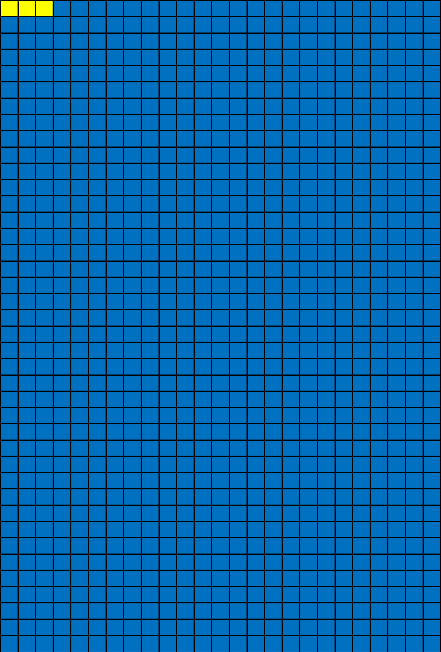Foodborne Illness Valuation Research
Generic Clearance for Survey Research Studies
Appendix 2. US Adult Severe Survey
Foodborne Illness Valuation Research
OMB: 0536-0073
OMB Control Number: 0536-0073
Exp. Date: 04/30/2025
US Adult Food Poisoning Severe Outcomes Survey
Thank
you for taking this survey.
This
survey is about the value you place on protecting yourself from
health problems that can result from food poisoning and other
infectious illnesses.
This
study is being conducted by researchers at the U.S. Department of
Agriculture (USDA).
Read
the survey carefully. There are no right or wrong answers. Please
respond as you would in real life.
Your
answers and identity will be kept confidential.
Only
summary results will be reported. No individual responses will be
identified in any reports.
The
information you provide will only be used for scientific research
purposes. It
will not be used for any other purpose.
Participation
in this survey is voluntary. You can end the survey at any time by
closing your browser window. If you do not complete the survey, none
of your answers will be
used in the analysis of survey responses.
USDA Burden Statement:
According to the Paperwork Reduction Act of 1995, an agency may not conduct or sponsor, and a person is not required to respond to, a collection of information unless it displays a valid OMB control number. The valid OMB control number for this information collection is 0536-0073, expiration date 04/30/2025. The time to complete this information collection is estimated to be 30 minutes.
USDA Assurance of Confidentiality:
The information you provide will be used for statistical purposes only. Your response will be kept confidential and any person who willfully discloses ANY identifiable information about you or your operation is subject to a jail term, a fine, or both. This survey is conducted in accordance with the Confidential Information Protection and Statistical Efficiency Act of 2018, Title III of Pub. L. No. 115-435, codified in 44 U.S.C. Ch. 35 and other applicable Federal laws.
Contact information: If you have questions regarding this survey, please contact Sandy Hoffmann at [email protected].
By this informed consent, you confirm that:
you are 18 years or older.
you are able to provide this consent.
you have read the information about the survey.
you are taking part in this survey by your own free will.
Proceed to Survey?
☐ Yes – I have read the information above and wish to take the survey.
☐ No – I do not wish to take this survey.
This survey is about the impacts of infectious illnesses like food poisoning or flu on your quality of life (including pain and suffering).
Please assume that any financial impacts from the infectious illness are taken care of. These impacts include the cost of treating the illnesses or loss of income because you’re ill.
To start, please think about how you feel physically and emotionally today and respond to the following standard health questionnaire.
We will use your responses to customize the survey for you.
Remember, your name will not be recorded with your responses. Your information will be kept confidential.
For each of the 5 aspects of health below, please check the ONE box that best describes how you are TODAY.
Mobility
☐ I have no problems walking about
☐ I have slight problems walking about
☐ I have moderate problems walking about
☐ I have severe problems walking about
☐ I am unable to walk about
Self-Care
☐ I have no problems washing or dressing myself
☐ I have slight problems washing or dressing myself
☐ I have moderate problems washing or dressing myself
☐ I have severe problems washing or dressing myself
☐ I am unable to wash or dress myself
Usual Activities (e.g., work, study, housework, family, or leisure activities)
☐ I have no problems doing my usual activities
☐ I have slight problems doing my usual activities
☐ I have moderate problems doing my usual activities
☐ I have severe problems doing my usual activities
☐ I am unable to do my usual activities
Pain/Discomfort
☐ I have no pain or discomfort
☐ I have slight pain or discomfort
☐ I have moderate pain or discomfort
☐ I have severe pain or discomfort
☐ I have extreme pain or discomfort
Anxiety/Depression
☐ I am not anxious or depressed
☐ I am slightly anxious or depressed
☐ I am moderately anxious or depressed
☐ I am severely anxious or depressed
☐ I am extremely anxious or depressed
Please remember that your answers to all questions will remain confidential.
To your knowledge, have you or any close family member or friend ever had any of these health conditions?
Check all that apply:
-
You
Close family member or close friend
Health outcome
☐
☐
hospitalization for a stomach bug
☐
☐
bloody diarrhea
☐
☐
Sepsis
☐
☐
appendectomy
☐
☐
HUS (haemolytic uremic syndrome or hospitalization for E coli O157)
☐
☐
permanent kidney failure
☐
☐
arthritis due to an infection (reactive arthritis)
☐
☐
irritable bowel syndrome (IBS)
☐
☐
Guillan Barré syndrome (GBS)
☐
☐
autoimmune disorder
☐
☐
vision impairment that couldn’t be corrected with glasses or contacts
☐
☐
long COVID
☐
☐
been in ICU
☐
☐
been on a mechanical ventilator
☐
☐
had dialysis
☐
☐
none of the above
Have you had an infectious illness (like food poisoning or flu) in the past week?
☐ Yes
☐ No
To the best of your knowledge, have you ever had an infection that caused another health problem that lasted 6 months or more?
☐ Yes
☐ No
Risk/Chance
This survey talks about the chance (or risk) of getting different infectious illnesses.
Before going further, we need to talk about what we mean by chance. We also need to explain the way we’ll show how big a chance is.
A coin flip has an equal chance of coming up heads or tails, that is, 1 in 2.

Imagine that you throw a die. The die has 6 sides, so the chance of getting any one side will be 1 in 6.

Here is another way to see the chances of 1 in 6 – as a simple graph.
![]()
Suppose the chance of catching a common cold in a normal winter is 6 in 100. Here is how we would show this chance.
The picture below represents 100 people. The 6 yellow boxes represent people who will catch a cold next winter. The remaining blue boxes (94) represent people who will not catch a cold next winter.
Chances
of catching a common cold
next
winter 6
out of 100

In a similar way, we can show the chances out of 1000.
For example, the chance of being injured in a car accident over 5 years is about 63 out of 1000. Here is how we would show that chance in a figure.
The figure below represents 1,000 people.
The 63 boxes colored yellow represent people who will be injured in a car accident over the next 5 years.
The remaining boxes colored blue (937) represent those who will not be injured.

Chance of being injured in a car accident
63 out of 1,000
over the next 5 years

Finally, we can compare two different risks using these figures. Driving more carefully may reduce the chance of injury in a car accident. Figure A shows a risk of 63 out of 1,000 (as before) while Figure B shows a risk of 49 out of 1,000.
Figure B Driver B
Figure A AADriver A

Chance of being injured in a car accident if driving more carefully
than average 49
out of 1,000 over
5 years
Average chance of being injured in a car accident
63
out of 1,000 over
5 years



☐ Figure A ☐ Figure B
Which Figure shows the lower risk of being injured in a car accident over 5 years?
We will use figures like these when we ask you to make choices about the health risk you could face from an infectious illness.
We are going to ask you about choices you could make to reduce your risk of complications or long-term health problems from infectious illnesses.
Assume that if you get sick:
your medical costs will be covered
You won’t lose wages or other earnings
We want you to focus only on loss of quality of life (including pain and suffering) from these illnesses, not on financial losses.
You could reduce your risk, but at a cost. You’ll have to pay to reduce the risk yourself; insurance won’t cover it.
Please treat the following choices as if you were in a real-life situation.
Do not agree to pay an amount that you cannot afford or agree to pay if there are more important ways to spend your money.
When making these choices, please keep in mind:
Assume:
you would be responsible for any payment
you can borrow money, but assume you would need to pay off the loan over five years
you are not able to do any type of fundraising (for example, GoFundMe) or accept gifts to cover any costs
We are going to ask you to make several choices.
Please think about each of these choices separately.
For each choice, assume you have not spent your resources on the prior choices.
5.1-5: IBS
In the next 5 years you get an infectious illness. As a result, you have a 10 out of 1000 chance of developing Irritable Bowel Syndrome (IBS).
Symptoms:
frequent (weekly/monthly) episodes of diarrhea and/or constipation
episodes last a few days each time
cramping and pain in lower belly
bloated, excessive wind
urgent need to get to the toilet
Impacts:
can affect social life and ability to go out and about.
does not cause other health problems
Treatment:
once IBS develops, you can only treat its symptoms
Duration:
50% of people recover fully within 2 years
35% recover fully within 5 years
10% recover after 8 years
5% of people never recover
Your choice
In the next 5 years you get an infectious illness and have a 10 out of 1000 chance of developing IBS as a result.
Suppose you could reduce your risk for the next 5 years to 2 out of 1000, but at a cost. Insurance won’t cover this cost.
This protection would last for 5 years. You could then pay to reduce your risk for another 5 years. And so on.
______
Treat this choice separately from all others. You have your full budget available.
Remember: your medical costs will be covered and you won’t lose wages.
Focus on loss of quality of life (including pain and suffering).
Which of the two options below would you choose?
Chance of getting IBS due to an infectious illness over the next 5 years if you …
|
Option A. Do nothing
|
Option B. Pay to reduce risk
|
|
10 out of 1000 over 5 years |
2 out of 1000 over 5 years |
||
Cost to you per year (Total over 5 years) |
$0 (no cost over 5 years) |
$150 per year (total cost $750 over 5 years)
|
|
I would choose: |
☐ |
☐ |
|
|
|
|
|
|
|
|
[If A chosen] If option B costs $75 per year ($375 total over 5 years), would you still choose Option A? ☐Yes ☐No |
|
[If B chosen] If option B $1500 costs per year ($7500 total over 5 years), would you still choose Option B?
☐Yes ☐No
|
We are now going to ask you to make more choices about protecting your health. We’ll use descriptions from the health questionnaire you answered earlier to describe health outcomes
6.1-5. Chances of health complications
In the next 5 years you get an infectious illness. As a result, you have a 3 out of 1000 chance of developing a health complication.
There are ways to lower your risk and the severity of the health complication. This protection lasts for 5 years.
Here are the chances you could face.
|
|
|
|
A. with no protection |
|
B. with partial protection |
|
C. with full protection |
|
|
Chance of a complication from an infectious illness in the next 5 years
|
|
3 out of 1,000 |
|
2 out of 1,000
|
|
0 out of 1,000
|
Your choices appear next.
Choice 1. Your choice
You would need to pay to get protection from this complication. Insurance won’t cover this cost.
This protection would last for 5 years. You could then pay for protection for another 5 years. And so on.
_____
Assume that if you get ill, the cost of treating the illness would be covered, you won’t lose wages or other income.
Focus on loss of quality of life (including pain and suffering).
Which option would you choose?
Option
|
|
A. do nothing
|
|
B. pay for partial protection
|
|
C. pay for full protection |
|
|
slight problems walking about
|
|
slight problems walking about
|
|
|
||
|
slight problems washing or dressing yourself |
|
slight problems washing or dressing yourself |
|
current health [pipe in EQ5D levels from responses on EQ5D question at the beginning of the survey]. |
||
Impact of complication |
|
slight problems doing your usual activities
|
|
slight problems doing your usual activities |
|
||
|
moderate pain or discomfort
|
|
slight pain or discomfort
|
|
|||
|
slight anxiety or depression
|
|
no anxiety or depression
|
|
|||
Complication lasts |
|
4 months |
|
2 weeks |
|
0 days |
|
Chance of a complication from an infectious illness over the next 5 years |
|
3 of 1000 |
|
2 of 1000 |
|
0 of 1000 |
|
Cost to you per year (Total over 5 years) |
|
$0 per year ($0 over 5 years) |
|
$500 per year ($2500 over 5 years) |
|
$2500 per year ($12,500 over 5 years) |
|
|
|
|
|
|
|
|
|
I would choose |
|
☐ |
|
☐ |
|
☐ |
|
Questions about your survey experience
We would like to ask you about your thoughts as you made your choices.
How much do you agree or disagree with the following statements?
I responded to the survey as I would have done in real life.

7.2. The survey provided me with enough information to make informed choices.

7.3. I am confident about my choices.

7.4. I would pay almost any amount to protect my health.

7.6. When I
made my choices, I thought I would have to pay to reduce my risk.

7.7. I made my choices knowing that if I agreed to pay, I would have less money to use for other things.

7.8. When I made my choices, I assumed my medical care costs would be covered.

7.9. When I made my choices, I assumed I would not lose any wages or other income because I was sick.

7.10. When I made my choices, I did not think about purchasing the protection for anyone else in my household.

7.11. When I made my choices, I assumed prior choices would not affect the financial resources I had available to pay for the choice I was making.

7.12. When making my choices I only thought about protecting myself from the symptoms described, and no other symptoms.

7.13. When making my choices, I considered the impact the illness might have on my usual activities outside of work (for example, work around the house, or recreation).

7.14. When making my choices, I did not think about the possibility of dying prematurely from the infectious illness.

7.15. Which risk is bigger?
a. 0.26 out of 1000
b. 1 out of 1000
7.16. I worried about how the risk would be reduced and that influenced my choices.

7.17. How would you describe your knowledge of the health impacts of infectious illnesses before taking this survey?

7.18. How would you describe your knowledge of the health impacts of infectious illnesses after taking this survey?

General health questions
8.1. How would you describe your health in general?

8.2. How would you describe your health compared to others of your age and gender?

Other background questions (1)
The survey is almost finished, we have just a few more questions.
9.1. If you need medical treatment, how would you cover the cost?
☐ Private health insurance (e.g., through your employer) would cover all or most of the costs.
☐ A public health insurance program (e.g., Medicare or Medicaid) would cover all or most of the costs.
☐ Private and public health insurance together would cover all or most of the costs.
☐ I would have to cover most of the costs out of my own pocket.
☐ Other.
9.2. How long does it take you to travel to see a doctor?
☐ less than 15 minutes
☐ 15-30 minutes
☐ 31-60 minutes
☐ over an hour
9.3. How long does it take you to travel to the nearest hospital?
☐ less than 15 minutes
☐ 15-30 minutes
☐ 31-60 minutes
☐ over an hour
Other background questions (2)
9.4. Do you have any children under the age of 18 living in your household?
☐ Yes
☐ No
[If yes] Are any of these children 5 or younger?
☐ Yes
☐ No
9.5. I can make ends meet:
☐ Very easily
☐ Easily
☐ Neither easy nor difficult
☐ With difficulty
☐ With great difficulty
Thank you for completing this survey.
| File Type | application/vnd.openxmlformats-officedocument.wordprocessingml.document |
| Author | Hoffmann, Sandra A - REE-ERS, Washington, DC |
| File Modified | 0000-00-00 |
| File Created | 2024-07-20 |
© 2026 OMB.report | Privacy Policy




